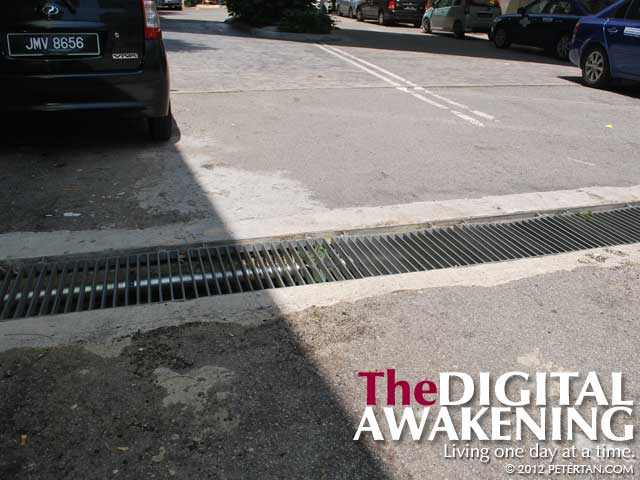Of quacks and snake oil pedlars
by Peter Tan. Posted on August 17, 2013, Saturday
“WHAT is wrong with you?” a stranger asked as I passed by him outside a shop. He had been observing me from a distance.
“There is nothing wrong with me,” I responded, feigning ignorance. I already knew where the question would lead to.
Unperturbed by my answer, he followed me from behind and fired a barrage of questions, “Why are you using a wheelchair? You cannot walk? What happened?”
Before I could answer, he continued, “I know a sifu who can treat you. He has treated many people like you. They could walk again after six months of treatment.”
“Thank you. I am not interested,” I declined politely and pushed my wheelchair a little faster to shake him off my back.
“You do not want to walk again?” he shouted after me.
It was not that I do not want to walk again. I was simply tired of the same rigmarole strangers, well-meaning relatives and friends put me through all the time. They all knew of someone who could make me walk again and insisted that I try the treatments whether I liked it or not.
Do not get me wrong. I am grateful for the people around me who care for my well-being. However, their persistence in recommending treatments can be off-putting. They saw my impairment as a condition that had to be corrected and took it upon themselves to dish out unsolicited advice.
There is also a reason why I am wary of these word of mouth recommendations. In the early years after my accident, my parents, in their haste to get me back on my feet, spent a small fortune on alternative treatments after I was discharged from the hospital.
They engaged Chinese sinsehs (traditional Chinese physicians) recommended by relatives and friends to massage my paralysed limbs with the hope that I could regain full use of them again.
The first sinseh who treated me was recommended by a relative who sang praises of his skills in “healing hopeless cases” like mine.
He would heat up a pungent liniment on a small tin can stove that he brought along and applied it copiously on my body and massaged me from head to toe. I was not allowed to bathe for four hours after that although the smell of the liniment was nauseating.
He had assured my parents that it would take no more than three months for me to be up and running. When it was apparent that his massages did nothing to cure me, he collected the final instalment of his overpriced fees and was never heard from again.
I went through a few more of such sinsehs, each charging exorbitant sums but delivering nothing. I was still as paralysed as ever and my parents were none the wiser. They were always on the lookout for more treatments as soon as the previous ones failed to show any result.
Friends who were into multi-level marketing were never short of newfangled products to recommend as well. The various health supplements, gadgets and magnetic mattresses could purportedly help with my recovery. My parents were invariably taken in by their persuasive wiles. None of them worked.
Even then, my parents never gave up hope. They took me to temples situated in remote places at ungodly hours to consult mediums of the supernatural. Some of the mediums said that I was punished for offending a deity. Others said that it was my karma.
The mediums performed elaborate rituals to appease the deity I had supposedly offended and made me drink water mixed with ashes from burnt paper talismans. These did not work either.
I am still troubled by the fact that my parents had used up a large chunk of their hard-earned savings to chase after sham treatments for me. There was no shortage of tricksters who were more than eager to prey on their desperation.
Although I had indicated to them that I was not too keen on the treatments, parents being parents, they wanted to give me the best they could afford. I cannot fault them for their lapses in judgement in this matter. They did it because of their unwavering love for me.
The harsh reality is that there is no sure cure for spinal cord injury at this point in time. That is the reality I have come to accept after many years of hoping against hope. Once the spinal cord is injured, there is little medical science can do to reverse the damage and restore the loss of function and sensation.
The most promising treatment for now is stem cell therapy. However, it is still at clinical trial stages and very expensive. There is also no guarantee that it will work for everyone undergoing the treatment.
Likewise, robotic exoskeletons are being extensively developed to assist people with spinal cord injury. Again this technology is still not widely available and is expensive to boot.
All said, physiotherapy was the only treatment that worked for me. It helped improve strength in the remaining muscles that were functional. It kept my limbs supple. I worked with a dedicated physiotherapist for five years in an attempt to walk again. That effort failed but I have no regrets because I am proud that I tried my best.
Whenever I meet people with recently acquired spinal cord injury, my first advice is to not waste money on alternative treatments that have not been proven to work. This advice usually falls on deaf ears.
They would still put themselves through the same useless treatments only to discover later that it was indeed an exercise in futility. It is sad to see them repeating the same mistakes my parents made despite being warned.
The tens of thousands of ringgit frittered away could have been spent on better wheelchairs, assistive devices and support services. I hope people in situations similar to mine will take heed of this advice.
Comments can reach the writer via columnists@theborneopost.com.
Read more: http://www.theborneopost.com/2013/08/17/of-quacks-and-snake-oil-pedlars/#ixzz2elKFu65G












